Ernie Isley’s first recording experience with The Isley Brothers was playing bass on the hit song “It’s Your Thing” – at the tender age of 16! He never looked back, becoming the band’s lead guitarist and contributing blistering fretwork to songs like “That Lady” and “Summer Breeze”. He also co-wrote such Isley Brothers classics as “Fight the Power”, “Harvest for the World”, and “Take Me to the Next Phase”. Ernie also co-founded Isley-Jasper-Isley, which had a hit song “Caravan of Love”.
With his brother Ronald, Ernie continues to carry the Isley Brothers torch, with their latest release being the 2017 collaboration with Santana called Power of Peace.
This interview was for a preview article for noozhawk.com for the Isley Brothers concert at the Chumash Casino on 2/16/18. It was done by phone on 2/6/18. (Tracy Isley photo)
Jeff Moehlis: What can people look forward to at the upcoming show?
Ernie Isley: They’re going to hear everything from “Shout” to “It’s Your Thing”, “Fight the Power”, “That Lady”, “Between the Sheets”, “Summer Breeze”, “Voyage to Atlantis”. They’ll get a pretty full dose of the catalog.
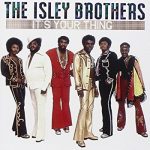
JM: It sounds like exactly what we want to hear. “It’s Your Thing” was your first official recording session with the Isley Brothers. How did it happen that a 16 year old kid ended up playing on what became a Number One R&B single?
EI: Well, I was prepared in my mind to play drums. In rehearsal I had played drums, and then I switched off the drums and played the bass part. When we got to the session I was setting up the drum kit and the bass player came in, and I showed him what I had been playing. And when he started playing, he was more or less playing what he felt, but it wasn’t what I showed him. So just before we started the actual recording, Ronald came over to me and said in my ear, “You’re gonna play bass”, and my heart was immediately thumping. I was scared.
They handed me the guy’s bass and put the headphones on me. I heard a voice saying, “Rolling” and counted it off. I held onto the bass for dear life and played it. And it turned out that it worked. Everything about that song, everything about that record worked. Everything. The tempo, the lyrics, the musical track. Ronald sang it on one take, the very first take. Of course, we didn’t know that it was going to be the Frankenstein monster hit 45 for the Isley Brothers’ career.
JM: Are you kind of glad that you didn’t know that you were going to be playing bass on it? I imagine it would’ve been pretty nerve wracking.
EI: You know, we never really had a roadmap or a plan per se. We were just going after the music, and that was just a practical decision. I know when I played the bass part in the studio as a run-through with all the band there, it sounded like… Man! The musical track was loud, and it was funky, and each instrumental part was kind of signature, you know the trumpets, the saxes, the piano, what the drums were doing. It was amazing. J
ust before we did it, when they said, “Ernie go ahead and do this”, for me it was nerve wracking. But on the other had you have to have that kind of baptism if you’re going to be in this business. You have to have something that makes you feel like, “I don’t know whether I can do this, because the water’s awful deep.” It’s like, you can do it. Just jump in. And that is what happened.
At that time I had only had a guitar for like 30 days, maybe 60 days. I got my first guitar in September of that year, and that song was recorded in November. But I’d been noodling around on bass for a while, particularly listening to James Jamerson and the Motown stuff, “This Old Heart of Mine”, etc. So I had some idea when it came to the bass part what I should do. It just so happened that it worked. Like I say, everything on that track worked.
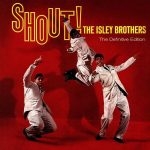
JM: Before “It’s Your Thing” your older brothers already had a lot of success. What was it like for you watching and hearing about their success. Did it make you want to do it yourself?
EI: As a kid, you’re growing up and it’s my family. It was very exciting to sit in the audience and see them perform. No one could follow them. Jackie Wilson, Sam Cooke, Otis Redding, Smokey Robinson and the Miracles. Nobody could follow them, nobody wanted to follow them because of “Shout”, and “Twist and Shout”. It was a very hard act to follow. So they were always closing the show. It was a real rush, a real spectacular thing to see. Like, “Man, that’s my family! That’s my brothers! Wow!” It was incredible. So you see that, but you’re a kid and you’re growing up. I started trying to play drums when I was 12. So that was quite some time to be going to a show and watching them perform.
A lot of people don’t know that Jimi Hendrix was a house guest and an employee from March of ’63 until November of ’65. They got him his first Fender guitar, his very first one. I was 11 years old at the time. I never heard anybody play a guitar like that. So on top of whatever they were doing, they had him, too. The Isley Brothers just left him alone. In a live setting, just forget about it. They were cooking on all cylinders.
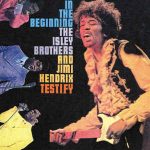
JM: What was Jimi Hendrix like as a person?
EI: That’s a very good question, because that’s how I relate to him, as a person. He was somewhat shy, polite, respectful, a great sense of humor, good appetite [laughs]. And he played guitar all the time. He played it before rehearsal, during rehearsal, after rehearsal. On off days he was playing it. So anytime he was in the house he was playing his guitar.
From my point of view, I was like, “What’s he practicing for? He’s already that good, he doesn’t need to. He should do something else.” But he would have the instrument with him. During Saturday morning cartoons… the Super Chicken, Bugs Bunny. He played very well, very well. I never heard anybody else play guitar like that.
The first time The Beatles were on Ed Sullivan, on the couch I’m sitting on the lefthand side, my younger brother Marvin is sitting on the righthand side, and Jimi Hendrix is sitting in the middle. Ed Sullivan said, “Ladies and gentlemen, The Beatles.” We saw a spectacular British group, but there was no clap of thunder or anything over our house, because you can’t see the future. But a few days after that there was a meeting with the whole band, and the producer – my oldest brother Kelly – said, “You know, this English group has changed everything for everybody. I don’t even know what may happen with Elvis Presley himself. But, I think we’re going to be alright because they do both ‘Shout’ and ‘Twist and Shout’ in their repertoire. Now, they have two guitar players, but we’ve got Jimi.” And when he said, “we’ve got Jimi”, I looked over at Jimi, and Jimi was grinning from ear to ear at that remark. Because it was true. It was true. So they really didn’t feel threatened. They just kept plugging away at what they were doing. Marvin and I were not musicians initially. We did become that, but we were not musicians while Jimi was there in the house. We eventually grew into that.
Around November of ’65, all of the sudden I stopped seeing him. I asked Kelly, “What’s up with Jimi? Where’s he at?” He goes, “Oh Jimi. We had a conversation, and Jimi said how much he appreciated the hospitality and being in the band, but he wants to do some other things now. So we parted on good terms. He only asked one favor before he left.” I said, “What was that?” He said, “He wanted to take the white Strat with him.” So we gave it to him. We gave it to him as a parting gift. At some point after that, the rest goes into history.
Had he been around when “That Lady” came out, he probably would’ve given me something between a bear hug and a tackle. “How in the hell did you ever learn how to do that?” And I’d say, “Hey, man, I was listening to you when you were in the dining room or the kitchen or wherever you were playing. That’s how I got able to do it.” He would be laughing. Kelly would’ve had him up near the front door, poking his ribs, yelling at him. Jimi, he just would’ve been laughing. He would’ve had tears in his eyes laughing so hard, something like that would’ve happened.
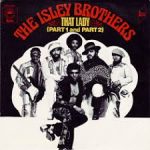
JM: The guitar part in “That Lady” is just phenomenal. Where was your mind at for that? Were you in the zone? How did you do it?
EI: We were getting ready to go out to California to record. Ronald said, “We’re going to California to record to get something that we haven’t gotten before,” in terms of the sound of our records. And I was like, “What are you talking about?” He said, “You know, Sly Stone’s out there, Stevie Wonder’s out there, James Taylor’s out there. Everybody is starting to do records in California. When we got out there, we’re going to do ‘That Lady’.” I said, “That was like a cha cha bossa nova.” He said, “Yeah, but we’re going to change it. We’re going to change the tempo, we’re going to change the lyric, we’re going to change the melody, and you are going to play lead guitar.” I sort of shrugged and said, “OK”.
I went to a guitar shop on Sunset Boulevard, and I came into the store looking for a sound. I had some idea what sound I wanted, and when I found it I was playing it live in the store, but nobody came over to me and asked anything. It didn’t stop store traffic, whatever was going on. But I knew I had the sound. That night I went to the studio saying, “I’ve gotta get this pedal.” The engineer said, “Whatever you need, we can get that from Studio Instrumental Rentals – SIR.” And the next day it was there.
The “That Lady” track was funky, danceable – it had a lot of rhythm to it. And then I plugged into the lead, and when I hit the very first note the song went from, like, black and white to 3-D technicolor. It turned into something that none of us, quite frankly, could’ve imagined or expected. And I played everywhere, and after I finished I was yelling and the engineers were going nuts. Everybody else was kind of mummified. My oldest brother Kelly looked at me through the studio glass, like he didn’t blink for 45 minutes. Then [yells], and it was like, “Ernie, you’re going to have do another take, because you’ve got to make room for the vocals.” So I was kind of ticked off and did a second take.
The second take is what’s on the record. But the first take was better. Because the first take was like, “Just play.” So it was like a guitar instrumental. I was like, “You could release it like that”, and nobody disagreed. Because it was out of here. Unfortunately we had to erase it at that time. Now, if you did something like that you’d save it on a track and do a second one. That was the only downside of it.
But, of course, when it was finished and we played it for CBS the very first time, they said, “Well it doesn’t sound like ‘It’s Your Thing’. I mean, it doesn’t have saxophones and trumpets on it. But we like it. Now, you’ve got dance elements, R&B, but you’ve also got this lead guitar sound. How should we market this thing?” We said, “Just put it out, let it go everywhere.” It turns out when they put it out, that’s what it did. It wasn’t confined by a particular format. And that was my senior year in college, so I could be in the dorms in my room, and I had an AM/FM stereo. You could hear “That Lady” on the AM side, then go to FM and do the same thing. So that song was everywhere.
JM: Do you remember what guitar pedal you used for that?
EI: It was a Big Muff Phase Shifter Maestro. The sound of it obviously, at the time, came out of nowhere. It was like, “Who is that? The Isley Brothers? Wow! That doesn’t sound anything like ‘It’s Your Thing’. That doesn’t sound anything like ‘Work to Do’. That doesn’t sound anything like ‘This Old Heart of Mine’.” You know, there were rumors for a while that it was actually Jimi playing. I heard that and I thought, “Well, I must be pretty good then [laughs] if they’re going to say that about me.” But it turns out that it was me. It wasn’t Jimi, it wasn’t Eric Clapton, it wasn’t Carlos Santana. It was me. So that was cool.
And we had “Summer Breeze”, also, on that record, where I also played lead guitar. It was like the beginning of a whole new musical chapter and adventure for the Isley Brothers, because, as I said, we didn’t have any roadmap or anything. We were just pursuing the music wherever it took us.
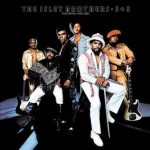
JM: It might be hard to believe that album 3+3 turns 45 this year. And it still stands up.
EI: Yeah, I listened to part of it the other day. It stands up very well. That’s a great thing about good music, that it stands up like that. Yeah, that’s a great record.
JM: How did the song “Fight the Power” come together?
EI: We had just finished the Live It Up album, and we were in California. I was told that we were going to fly my mother and my nieces and nephews and the brothers’ wives out to LA, and that we were all going to go to Disneyland. So I was going to Disneyland for the very first time. I got up and I was in a good mood, and I got in the shower and for some reason I started either singing or half-reciting “Time is truly wasting, there’s no guarantee. A smile is in the making, fight the powers that be”. I was like, “Oh my God.”
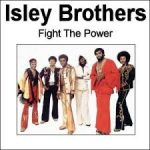
So I jumped out of the shower, the soap went this way, the shower curtain went that way, the water went this way, and I grabbed a piece of paper and a pen or a pencil and wrote that down while I was dripping on the paper. I took it with me in my hip pocket to Disneyland that day. I didn’t tell anybody for about two or three months after that, that I had the idea for the song. With everything else that we had done, when that song came out I felt there was definitely a significant change. That was our first Number One album on Pop Billboard, and “Fight the Power” of course was, in addition to being a hit, a game-changer for us. It changed everything.
JM: I have kind of a technical question. Looking at the Isley Brothers catalog, I’m struck how many songs have a Part 1 and a Part 2. That includes “Fight the Power”, that includes “Shout”, that includes a lot of things. What’s the story behind that? I know that sometimes the A-side of a single was Part 1, and the B-side was Part 2. But for The Heat is On album every song has a Part 1 and a Part 2.
EI: That was because of the length of the songs, and if they had been singles that’s what it would’ve been. Back in the day, “Shout – Part 1” and “Part 2”, it was the same song, but it was like a different version of the song. It was typically for that reason why that was done.
JM: What advice would you give to an aspiring musician?
EI: For musicians now, they’re going to have to be dedicated to the craft, they’re going to have to be focused, especially now in this climate because a lot that’s going on does not involve actual singing, it does not involve being able to play an instrument, it does not involve perhaps even the artist writing the song. So they’ll have to be dedicated and focused, and really wanting this thing with a passion. A passion for it. If they have that and the stick-to-it-ness, then that’s going to give them the best chance to succeed.
JM: What’s next for the Isley Brothers? Is there anything in the works? Any recordings or re-releases?
EI: Well, next year, 2019, is 60 years since the original release of the recording “Shout”. There are different plans afoot to acknowledge that happening. I imagine between now and then we’ll probably have some sort of new music out, if the Lord is willing. You know, just as a reminder.
I mean, “Shout” is everywhere. I guess we could do that in North Korea and they would know. They’d probably arrest us for singing. “No, we don’t allow no singing and dancing over here.” But they would know the song. “Shout” is everywhere. “Shout” could be the centerpiece of a performance at the Super Bowl, and have people come out there dressed in togas, just like Whoopi Goldberg, waving American flags. Everybody knows the song. It’s an all-American party celebration rock and roll song. Everybody’s done it. There’s not an artist I can name off the top of my head who doesn’t know it or hasn’t done it.
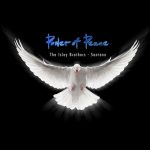
We just did a new CD with Carlos Santana, Power of Peace. Wow, that was a wonderful experience. A really excellent record with me, his wife Cindy, the Santana Band. I had to pinch myself. He’d be ten feet away from me playing, then he’d stop playing and point at me and I’d start playing, and I’d look up and he’d have this silly grin on his face, the same way I had when I was watching him. [laughs] It was a real musical embrace of the two careers.
JM: If you don’t mind returning to Jimi Hendrix, do you remember how Jimi reacted immediately after The Beatles played on Ed Sullivan?
EI: You know, in real time, in the real world, none of us has a crystal ball, and nobody can say what the future holds. So he was just as interested and curious as all of us were, because there was a buzz on The Beatles before they played Ed Sullivan. And if you were in the business at the time, you heard about this English band, but you hadn’t seen them yet, and that was their very first time. So he was curious and interested and paying attention.
And the fact that my oldest brother Kelly acknowledged him – “They’ve got two guitar players, but we’ve got Jimi” – that means no fear. We’re not worried about the English group and their guitar players. And those guys eventually turned into icons. All of them did. But in that moment it was like, “We’ve got ‘Shout’ and ‘Twist and Shout’. And yes, they perform ‘Shout’ and ‘Twist and Shout’. They’ve got two guitar players, but we’ve got Jimi.” It’s like, there was no fear. And that’s why he was grinning from ear to ear when he was acknowledged like that.
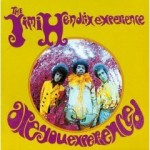
You know, I was a kid. I hadn’t yet turned 12, so I was more of an observer of these folks than I was actually trying to ask them. They were men and I was a kid. All of them were men. That chord – that E chord that’s in “Purple Haze” – was used for the first time on an Isley Brothers song called “Testify”. Jimi had a solo on that record, his first professional recording. With him, from the jump he was given preferential treatment. In terms of his personality he was somewhere between gentle and harmless, and he played very well. There were no restraints on him.
The fact that he was a house guest, that just ticked the rest of the bandmembers off. It was karma or something, for a reason. He was a total stranger. There’s musicians out here now waiting to be discovered, that if you actually knew them and knew what was in their future, you would go right up to them and have them stay in your house and drive them around, get them a new amplifier, all that kind of stuff. That was done for Jimi, partially out of being practical, and partially because he’s got something. He’s definitely got something.
And you don’t know where the business is going to go. Everybody thought at the time that The Beatles came on the scene, “Yeah, they’ll be here for about 6 months, then they’ll be out of here.” Not knowing that between George Harrison’s songs and the catalog of John Lennon and Paul McCartney, it’s like, “My God!” They literally changed the music industry. And of course, too, they had to happen first. Jimi didn’t happen first. They had to happen first.
They happened, then everybody started looking around for guitar players. “With all due respect, you like Eric Clapton? Check out this left-handed guy. You don’t know who he is, but he wants to sit in with you.” “Oh yeah, well nobody sits in with Eric.” “Well, you mind if this left-handed guy comes up here.” “No, go ahead.” It’s like, “Why did I do that?” [laughs] “Why did I do that? I just let Frankenstein onstage with me.” Nobody plays like that, you know? So we were very happy for him when Are You Experienced came out. I used to tell my friends at school, “We used to drink orange juice in the kitchen together” and “I ate dinner with this guy.” And his guitar might be leaning on his chair.
If you go back in a time machine to that time, and if your family came up to this guy and said “We want to put you in this house and we want to give you three guitars”, maybe your neighbors would be like, “Why are you doing all that for this guy? What makes you do that?” Well, you have to see the future. Nobody saw it, but I’m glad that we made a contribution to his life, and his name is on the Isley resume, and the Isley name is on the Hendrix resume. It couldn’t have worked out better for all concerned.
JM: I know you were very young, but did Jimi ever teach you anything on the guitar?
EI: Whenever I heard him play I would take a book, a notebook, a social studies book, and go in the same room. But I wasn’t doing social studies. I was watching and observing him. You know, a few years ago we were in the Hamptons, and Ronald and I had just finished coming offstage, and I went to sit down and my wife said, “Paul McCartney’s over there.” I said, “Where?” She pointed – he was about three tables away from me. I got up and I went over to him, and I tapped him on his elbow. He stood up at his full height and gave me a bear hug – I couldn’t breathe. Both of us were talking into each other’s ear at the same time, and I said something like, “Paul, you, Ringo, George, and John were just wonderful.” He said, “Ernie, if it was not for the Isley Brothers, the Beatles would still be in Liverpool.” Then he went onstage and said the same thing. Then we performed “Twist and Shout” together. Ronald was up there singing, Jennifer Hudson, Usher, Richie Sambora, Jon Bon Jovi, and I did “Twist and Shout”. When we got to the end “Ah, ah, ah, ah, ah, ah”, everybody in the building was standing up applauding, and looking around like, “Now what are we going to do?” You can’t go any further than that.
“Twist and Shout” was the first song The Beatles did at the Shea Stadium concert. The very first song of the show. Had they said at the time, “We’re going to do this with the Isley Brothers”, and “The guitar player is going to come out here”, little Ernie would’ve had a tambourine, and the guitar player would’ve been Jimi Hendrix. In 1965. “Oh my God, who is this?” He was playing like that in 1965. He was that formidable. He knew how to play. Nobody else played like that.

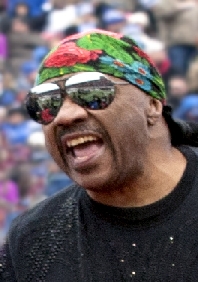
Discussion
No comments for “Interview: Ernie Isley”